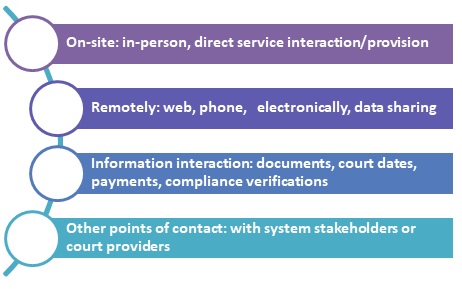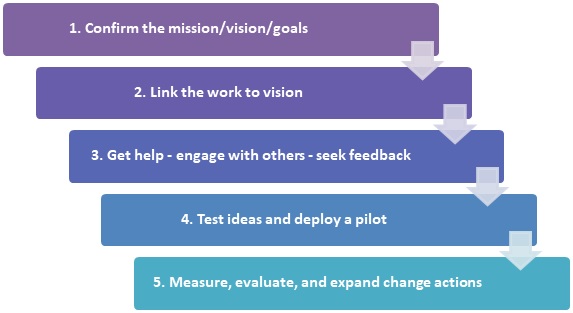Consider the recent focus on the need to change the manner in which courts deal with litigants. Examples include:
- new thinking on the use and role of fines, fees, and bail assessments;
- initiatives that change how courts handle cases (civil, criminal, and family); and
- a proliferation of self-help mechanisms and resource centers for court litigants.
Is it time for a kinder and gentler court? Yes! This article offers some ideas and opportunities for changes in the way the court and all court employees interact with litigants and provide services, and suggests how to get started.
Here are some words overheard about how litigants view the court. Do these sound familiar?
- intimidating (procedures)
- impersonal (communications)
- impatient (treatment)
- hostile (interactions)
- “a wall of text” (related to complexity of forms, instructions, and websites)
And here are some descriptors that perhaps portray a different type of interaction:
- self-help
- pathways
- fairness
- empathy
- service
- plain language
- understanding
- understandable
- meaningful
- supportive
- convenient
- quieting (of processes and areas)
- lessened stress
- minimized frustration
- tool availability
- options
Most of these terms indicate, in a subtle way, interactions that are perceived to be more reassuring and pleasing to the recipient. These may lay a foundation for how court practices should be framed.
Court customer perceptions have been catalogued by the National Center for State Courts (NCSC) in several “State of State Courts” surveys. Survey results from 2016 provided feedback on the following:
- views on the degree to which courts listen and treat people with dignity;
- perceptions of fairness and difficulties in understanding court processes; and
- opinions about the need for courts to change and innovate.
Among the influences that support courts being more moderate in the treatment of court users is the use and role of technology, the ability to ensure access to information and processes, reforms currently under way (e.g., civil-justice reform, bail practices and reforms), and ongoing attention to self-help mechanisms.
What areas should be subject to kinder and gentler access for court users? Answer: All of the areas and points where litigants interact with the court. Here are some that come to mind:
- filing of documents
- telephone interactions
- websites and electronic provision of information
- on-site contacts
- interactions during court hearings and events, and with service providers
Think about the variety of ways that litigants interact with the court. All can be evaluated to consider and create kinder and gentler processes.

What are the actions a court should take to become kinder and gentler?
- suspend a cynical view of court litigant expectations, interactions, and requests;
- challenge the current acceptance, as an employee, of existing processes;
- identify the top three strengths of the current operation and leverage them;
- consider the top three weaknesses of the current operation and minimize them;
- obtain court user and system partner input and vet ideas;
- define one thing that could be modified for the better, right now, and start it; and
- strategize on what the court can implement incrementally.
How can a court begin to create kinder and gentler practices? Here are five steps:
- Confirm and remember the court mission, vision, and goals.
- Link kinder and gentler related initiatives to the court’s vision and mission statement, and to any strategic plan or programs.
- Get help from and use a coordinating or representative group. Seek feedback and information from court users and system partners.
- Focus on where and how service changes can be made to benefit court users. Test ideas and scenarios for the desired change. Deploy a pilot to evaluate a new process.
- Measure outcomes. Evaluate and publish results. Make changes if needed. Determine next areas or targets for more changes, enhancements, and innovations.

Those who have worked in courts for some years may find it distasteful to reframe court practices to satisfy court users. That is a natural reaction. However, with emphasis on self-service and customer satisfaction, courts will benefit by improving and arraying services in a kinder and gentler way. Working in a court that is continually evaluating and improving work practices may be very rewarding and provide professional growth for court staff.
About the Author
Janet G. Cornell is a retired/former court administrator and is currently a court consultant. She can be reached at jcornellaz@cox.net. This article includes suggestions from personal observation and experience.



